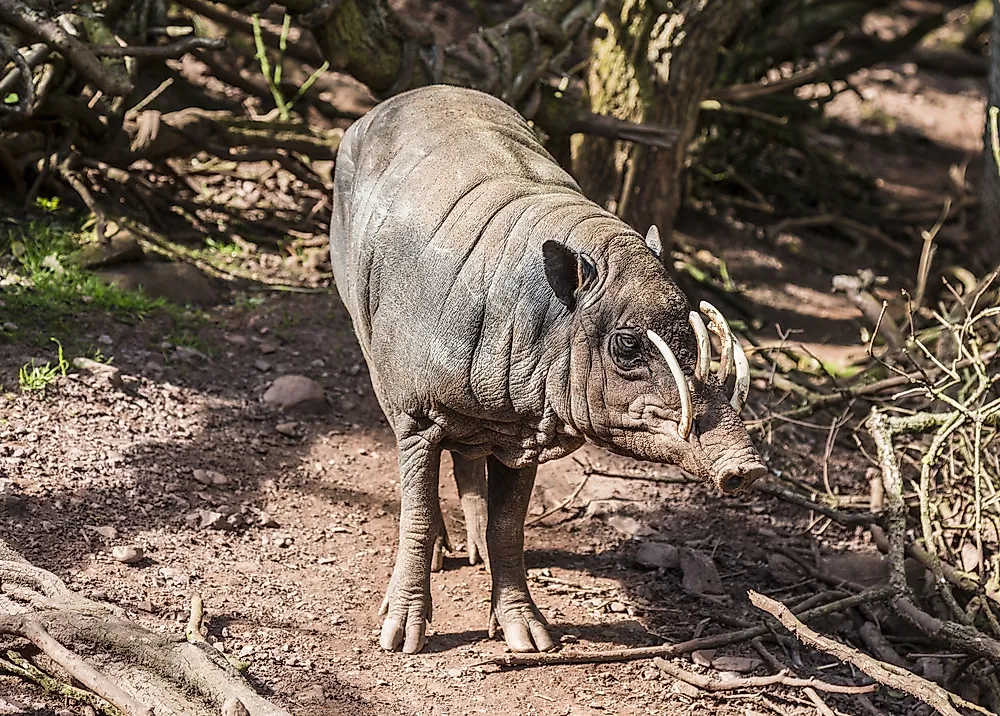Babirusa Facts: Animals of Asia

Sometimes known as deer-pig, the babirusa is a member of the swine family in the genus called Babyrousa. The animals exist in the Indonesian islands known as Wallacea which includes the islands of Togian, Buru, Sula, and Sulawesi. Previously, the name was used universally to refer to all members of the genus but there was a scientific split in 2002. Following the change, the animals from Buru and Sula are now scientifically known as Buru babirusa while the species from North Sulawesi is known as Buru celebensis.
Physical Description
The most remarkable physical feature about these animals is the long and protruding canines in males. These canines curve upwards and can end up impaling the foreheads of the owner. Females sometimes have shorter canines or none at all. Among different species, there are varying characteristics. For example, the golden babirusa has a pelage that may be white, black, creamy gold, or completely gold with a black rump. Those from northern Sulawesi tend to have short hair that may give an impression of baldness. The average length of a grown-up can reach up to 3 feet and 7 inches with tails growing up to 1 foot. The height may reach 2 feet and 7 inches upon maturity while the weight averages between 94.71 and 220 pounds.
Habitat
These animals are native to the aforementioned Indonesia islands. In Sulawesi, they roam from the northern peninsula to the south and southeastern provinces. Despite being native to these parts, the Banggai Archipelago, between Sulawesi and Sula, does not play host to any species. Currently, they mostly live in the higher parts of the islands despite being previously confined to the lower parts. Preferably, babirusas live along the riverbanks of tropical rainforests.
In their habitats, the males prefer to live in solitude. Females and young ones are social and will often be found living together in groups of up to 84 animals. In a fight, the upper tasks piercing the skull are used for defensive work while the offense is delegated to the lower jaw. All babirusas have to regularly grind its tusks against a hard surface. Failure to do so means that the teeth will keep growing unchecked until they end up killing the owner.
Reproduction
During the mating season, males battle it out for a right to mate. The females gestate the pregnancies for a period of between 150 and 157 days until giving birth. A litter typically has 1 or 2 piglets. Maturity is attained between one and two years and they may live for as long as 24 years.
Diet
Like all swine species, the animals are omnivores. Unlike other swine species, however, the babirusa does not use its snort to dig except in soft places like a swamp. The main diet involves leaves, fruits, animal material, and roots. Nuts are also easily cracked using the strong jaws.
Conservation
All species of the animal are categorized as endangered or vulnerable by the IUCN. However, illegal hunting and excessive logging have both threatened the survival of these animals up to date. The animals have had that status since 2010.











